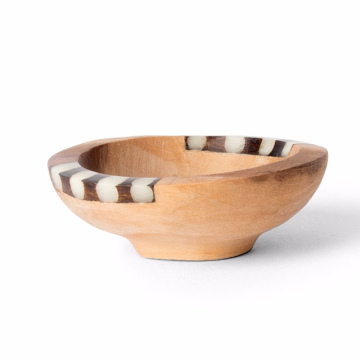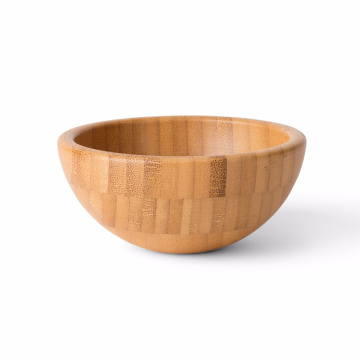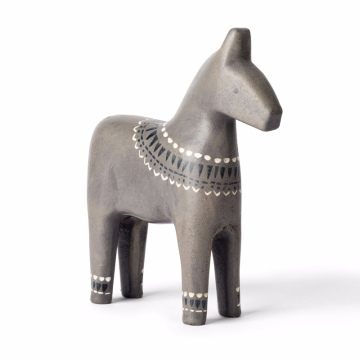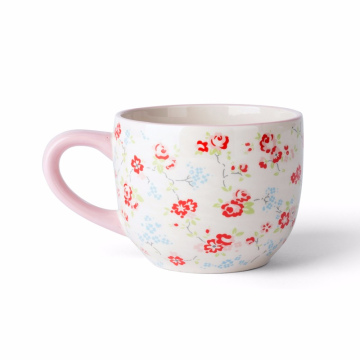The History and Cultural Significance of Sashimi
Sashimi, the delicate dish that features thinly sliced raw fish or meat, has deep historical roots in Japan, tracing back several centuries. Its origins can be linked to the practice of preserving fish with salt and fermentation, a method that emerged soon after the introduction of rice cultivation in Japan. The significance of sashimi lies not only in its preparation but also in its representation of Japanese culinary artistry. Over time, sashimi evolved from a method of food preservation into a celebrated dish that embodies the philosophy of simplicity and respect for ingredients.
In traditional Japanese culture, food preparation is an art, and sashimi exemplifies this through its emphasis on freshness and presentation. The choice of fish, the skill in slicing, and the arrangement on the plate are all pivotal to the dining experience. This meticulous attention to detail highlights the beauty of seasonal ingredients, showcasing the geography of Japan, where the ocean's bounty varies by region. For instance, in the colder waters of Hokkaido, one may find salmon and mackerel sashimi, while in warmer regions like Kyushu, varieties such as amberjack and horse mackerel are more common.
Moreover, sashimi is traditionally served during various Japanese festivals and rituals, further enhancing its cultural significance. It is often featured on special occasions, symbolizing purity and the connection between the earth and sea. The consumption of sashimi is not merely about satiating hunger; it acts as a reflection of Japanese familial values and hospitality, where sharing a meal constitutes a sacred bond. Throughout Japan's history, this dish has maintained its presence, evolving but never losing its essence, continuing to be a staple in both casual dining and fine culinary experiences.
A Slice of Japan: Exploring the Art of Sashimi
Explore the rich history and cultural significance of sashimi, a traditional Japanese dish renowned for its elegant presentation and fresh ingredients. Discover the craftsmanship behind its preparation, including the selection of fish and meticulous slicing techniques. From popular varieties like salmon and tuna to more exotic options like sea urchin, learn about the diverse flavors and textures that sashimi offers. Delve into dining etiquette and pairing recommendations to enhance your experience. Whether you’re dining in Japan or seeking authentic dishes elsewhere, understand how sashimi reflects the artistry and philosophy of Japanese cuisine.
A Slice of Japan: Exploring the Art of Sashimi
The Origins of Sashimi: A Culinary Tradition
Sashimi, a revered element of Japanese cuisine, has its origins deeply rooted in the rich history of seafood consumption in ancient Japan. Initially, the term "sashimi" referred to a method of preparation where fresh fish and other seafood were sliced and served raw. The practice is believed to date back over a thousand years, when people in coastal regions began to adopt methods of preserving fish, using techniques such as salt and fermentation. These early preparations laid the groundwork for what would evolve into the elegant art of sashimi we recognize today.
As Japan's culinary traditions developed through various historical periods, so too did the styling and presentation of sashimi. The Heian period (794-1185) saw the refinement of various eatables, and this era's court practices contributed significantly to the meticulous slicing and aesthetic presentation that sashimi is known for today. By the Edo period (1603-1868), sashimi had become a staple among both the elite and commoners, showcasing an evolution facilitated by increased availability of fresh seafood and the emergence of thriving fish markets, particularly in Edo (modern-day Tokyo).
The cultural significance of sashimi extends beyond its gustatory appeal; it serves as a symbol of purity, simplicity, and respect for nature. Each piece is artfully prepared with attention to detail, reflecting the seasonality of ingredients and the distinct characteristics of various fish types. From delicate slices of tuna to the tender flesh of flounder, the regional diversity often dictates the availability of local varieties, which can influence individual sashimi styles across Japan's coastal regions. Thus, sashimi stands not only as a culinary art form but also as a reflection of Japan’s geography, culture, and its peoples' intertwined relationship with the sea.
Understanding the Ingredients: Fish and Beyond
Sashimi, a traditional Japanese delicacy, primarily showcases the freshness and quality of its ingredients, with fish and seafood being the stars of the dish. Common types of fish used in sashimi include salmon, tuna, yellowtail, and mackerel. Each variety possesses its unique flavor profile and texture. For instance, tuna is revered for its rich, buttery taste and high-fat content, while salmon is celebrated for its vibrant color and delicate taste. Freshness plays a pivotal role in the selection process; sashimi should always be made from fish that has been sourced directly from reputable suppliers or local markets. This ensures not only superior taste but also food safety, as the delicate nature of the dish requires fish that has been handled properly.
Beyond seafood, sashimi also incorporates a variety of ingredients that contribute to its versatility. Non-seafood options like beef, chicken, or even vegetables can be artfully displayed as part of a sashimi platter. For example, sashimi-style preparations of vegetables, such as daikon radish or cucumber, provide a refreshing contrast to the richness of fish. These alternatives highlight that sashimi can cater to a wider array of dietary preferences, making it a more inclusive dish. Moreover, the use of ingredients beyond seafood reflects the creative potential of sashimi as a culinary art form.
Another essential aspect in the preparation of sashimi is the sustainability of the sourcing practices used for the ingredients. The Japanese culture places a strong emphasis on sustainable fishing, which is critical in preserving our marine ecosystems. Markets in Japan are known for their local and seasonal offerings, allowing chefs to craft sashimi with the freshest and most sustainably sourced ingredients. By supporting sustainable practices and local markets, we contribute to the quality of sashimi while also promoting environmentally responsible consumption.
The Art of Preparation: Techniques and Skills
The preparation of sashimi is a meticulous process that combines skill, precision, and an intimate understanding of the ingredients at hand. Central to this practice is the selection of fish, where chefs prioritize freshness and quality. Varieties such as tuna, salmon, and mackerel are common choices, but the best sashimi comes from fish that is sustainably sourced and handled with care. Chefs often inspect the fish carefully to ensure it meets the highest standards, paying close attention to aspects such as color, texture, and scent.
Once the ideal fish is chosen, the next step involves the careful art of slicing. The yanagiba knife, a traditional Japanese tool, plays a crucial role in this process. It features a long, thin blade that allows chefs to cut through the flesh with minimal resistance, resulting in clean, precise slices. Mastering the use of a yanagiba demands considerable practice, as the angle and pressure applied during slicing directly impact the texture and presentation of the sashimi.
In addition to culinary skills, attention to detail is paramount. Each slice must not only be uniform but also aesthetically pleasing, as the visual presentation is integral to the dining experience. This artistry is further highlighted through the careful arrangement of sashimi on plates, often accompanied by garnishes such as wasabi or shiso leaves, which enhance both flavor and visual appeal.
Respect for the ingredients is a vital aspect of sashimi preparation. Chefs in Japan typically express gratitude for the fish, recognizing the journey it has taken from ocean to plate. This reverence is reflected not only in the way they handle the fish but also in the level of skill and artistry they bring to the entire preparation process, demonstrating that sashimi is not merely food but a form of culinary expression.
Sashimi Culture: Pairings and Rituals
Sashimi, a culinary art deeply embedded in Japanese culture, is more than just raw fish; it encompasses a rich tapestry of traditions, pairings, and rituals that enhance its enjoyment. Traditionally, sashimi is served with several accompaniments that heighten its flavor profile and provide a sensory experience. One of the most common pairings is soy sauce, which adds a salty umami essence to the delicate taste of the fish. Diners typically dip their sashimi into the soy sauce, allowing the rich flavor to complement the freshness of the seafood.
Another essential component is wasabi, a pungent and spicy green paste derived from the wasabi plant. When used sparingly, wasabi not only adds a horseradish-like heat but also works to cleanse the palate between different types of fish, allowing each bite to be savored fully. Additionally, garnishes such as shredded daikon radish, shiso leaves, or edible flowers contribute not only to the visual appeal but also add nuanced flavors that enhance the sashimi experience.
The etiquette surrounding sashimi consumption varies across different dining settings in Japan. In casual izakayas, diners may enjoy sashimi in a relaxed environment, often sharing plates among friends while using chopsticks. In contrast, fine dining establishments may emphasize more formal protocols, where guests are encouraged to appreciate the artistry of each piece and partake in the sashimi in a slower, reflective manner. It is customary to acknowledge the chef's skill by expressing gratitude before enjoying the meal. These subtleties underline the importance of respectful dining and appreciation for the craftsmanship behind each sashimi preparation.
Ultimately, the cultural context of sashimi enhances its status as a culinary delight. By embracing traditional pairings and observing etiquette, diners can fully immerse themselves in the authentic Japanese experience while enjoying this exquisite dish. Sashimi is a celebration of freshness, flavor, and the artistry inherent in Japanese cuisine.




